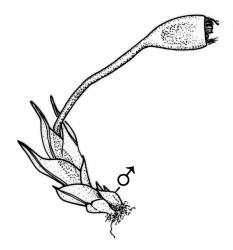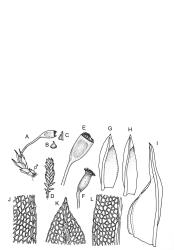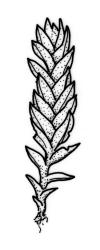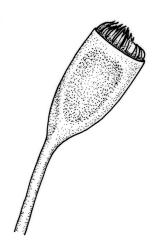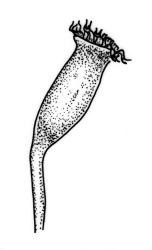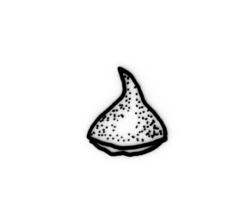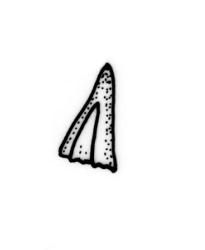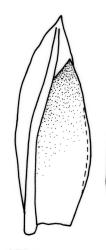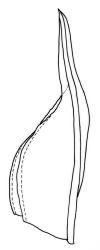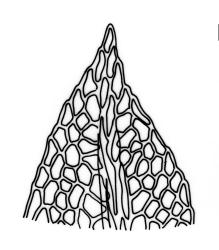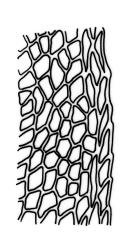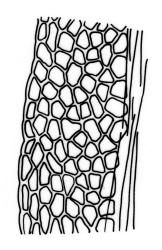Leaves in 8–12(–17) pairs, 0.3–0.9 × 0.1–0.2 mm; cells of apical and dorsal laminae (7–)9–20(–23) × (6–)7.5–10 (–11) µm. Costa subpercurrent to percurrent.
Polyoicous. Perichaetia terminal on short shoots, axillary at base of otherwise sterile shoots or apparently independent. Perigonia bud-like, usually at base of sterile or perichaetial shoots, occasionally numerous in leaf axils. Peristome bryoides-type; teeth with adaxial trabeculae below the bifurcation shallow and scarcely ornamented, 40–60 µm wide at base. Calyptra smooth, cucullate. Spores 15–32(–35) µm.
Beckett 1893, pl. 43 (as F. ramiger); Scott & Stone 1976, pls 7–9 (pro parte); Catcheside 1980, fig. 15; Stone & Beever 1996, figs 2, a, c, f, 3, a, e, 5, e–i; Beever et al. 2002, p. 68, figs 1-5; Bruggeman-Nannenga & Wigginton 2012, fig. 2, 3–7; Stone & Catcheside 2012.
NI: N Auckland (N Cape, Piha), S Auckland, Gisborne, Hawke’s Bay, Wellington; SI: Marlborough, Canterbury, Otago.
Anomalous. Tasmania*, mainland Australia*, reported from St Helena (Bruggeman-Nannenga & Wigginton 2012), U.S.A. (Pursell 1997), Central and South America (Pursell 2007), and tropical Africa (Bruggeman-Nannenga 2013).
Fissidens taylorii var. taylorii grows exclusively on soil, in mesic to xeric habitats, usually in modified and shaded or semi-shaded sites such as in pasture, or on the banks of roadside ditches. The species is widespread, with records mainly from the drier and more eastern parts of the North and South Is. It is frequently associated with other species of Fissidens, especially F. curvatus, but also with F. asplenioides, F. leptocladus, F. taylorii var. sainsburyanus, and other small mosses of bare ground, e.g., Bryoerythrophyllum dubius and Philonotis tenuis.
Although it is predominantly a lowland plant with nearly all records from below 250 m elevation, one collection has been recorded from 750 m elevation (Temple Basin, Canterbury L.D.).



